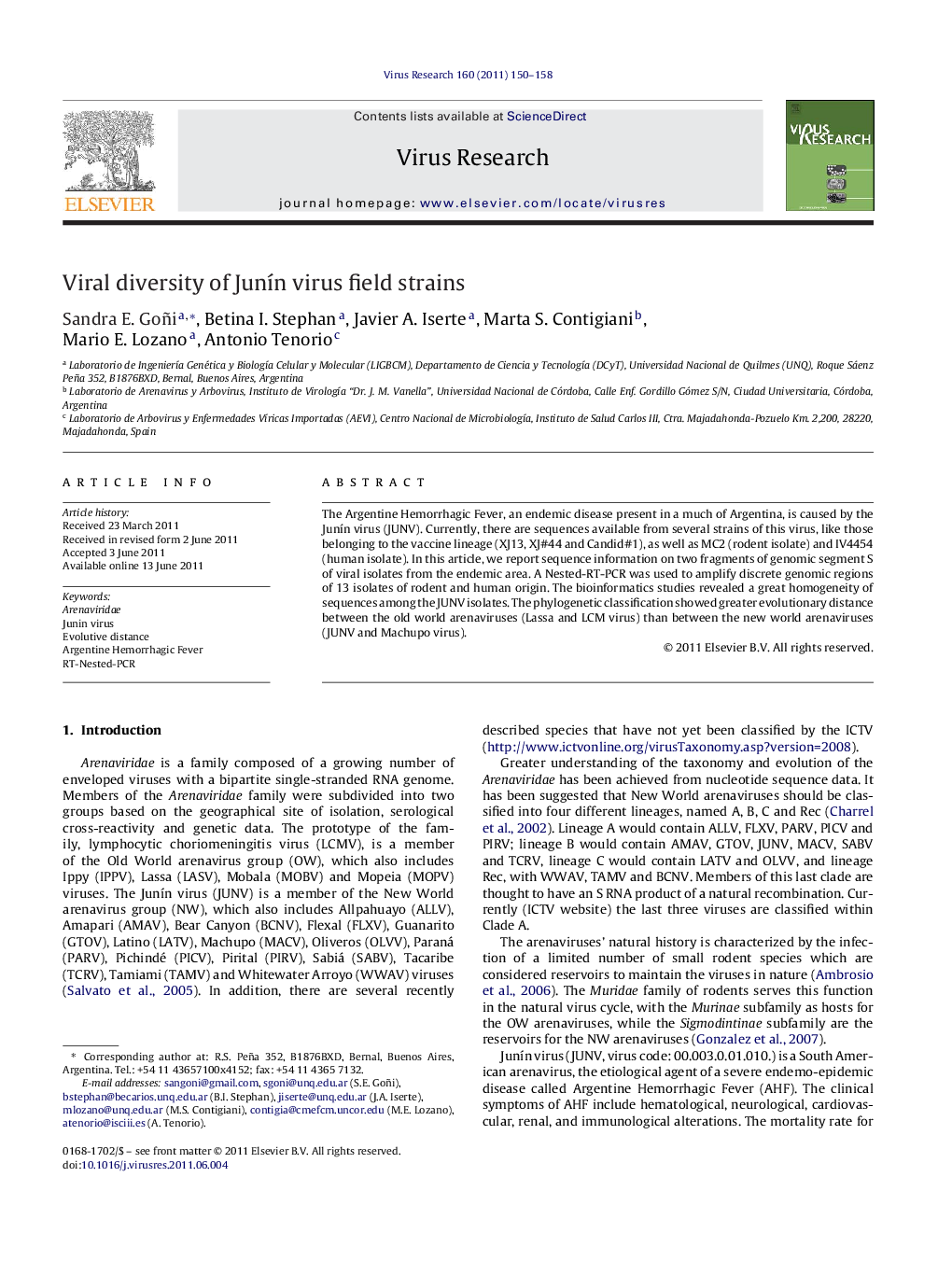| Article ID | Journal | Published Year | Pages | File Type |
|---|---|---|---|---|
| 6143359 | Virus Research | 2011 | 9 Pages |
The Argentine Hemorrhagic Fever, an endemic disease present in a much of Argentina, is caused by the JunÃn virus (JUNV). Currently, there are sequences available from several strains of this virus, like those belonging to the vaccine lineage (XJ13, XJ#44 and Candid#1), as well as MC2 (rodent isolate) and IV4454 (human isolate). In this article, we report sequence information on two fragments of genomic segment S of viral isolates from the endemic area. A Nested-RT-PCR was used to amplify discrete genomic regions of 13 isolates of rodent and human origin. The bioinformatics studies revealed a great homogeneity of sequences among the JUNV isolates. The phylogenetic classification showed greater evolutionary distance between the old world arenaviruses (Lassa and LCM virus) than between the new world arenaviruses (JUNV and Machupo virus).
⺠We report sequence information on two fragments of genomic segment S of viral isolates from the endemic area. ⺠We designed a Nested-RT-PCR to amplify discrete genomic regions of 13 isolates of rodent and human origin. ⺠Bioinformatics studies revealed a great homogeneity of sequences among the JUNV isolates. ⺠The phylogenetic classification showed differences in the evolutionary distance between the old world and new world arenaviruses.
